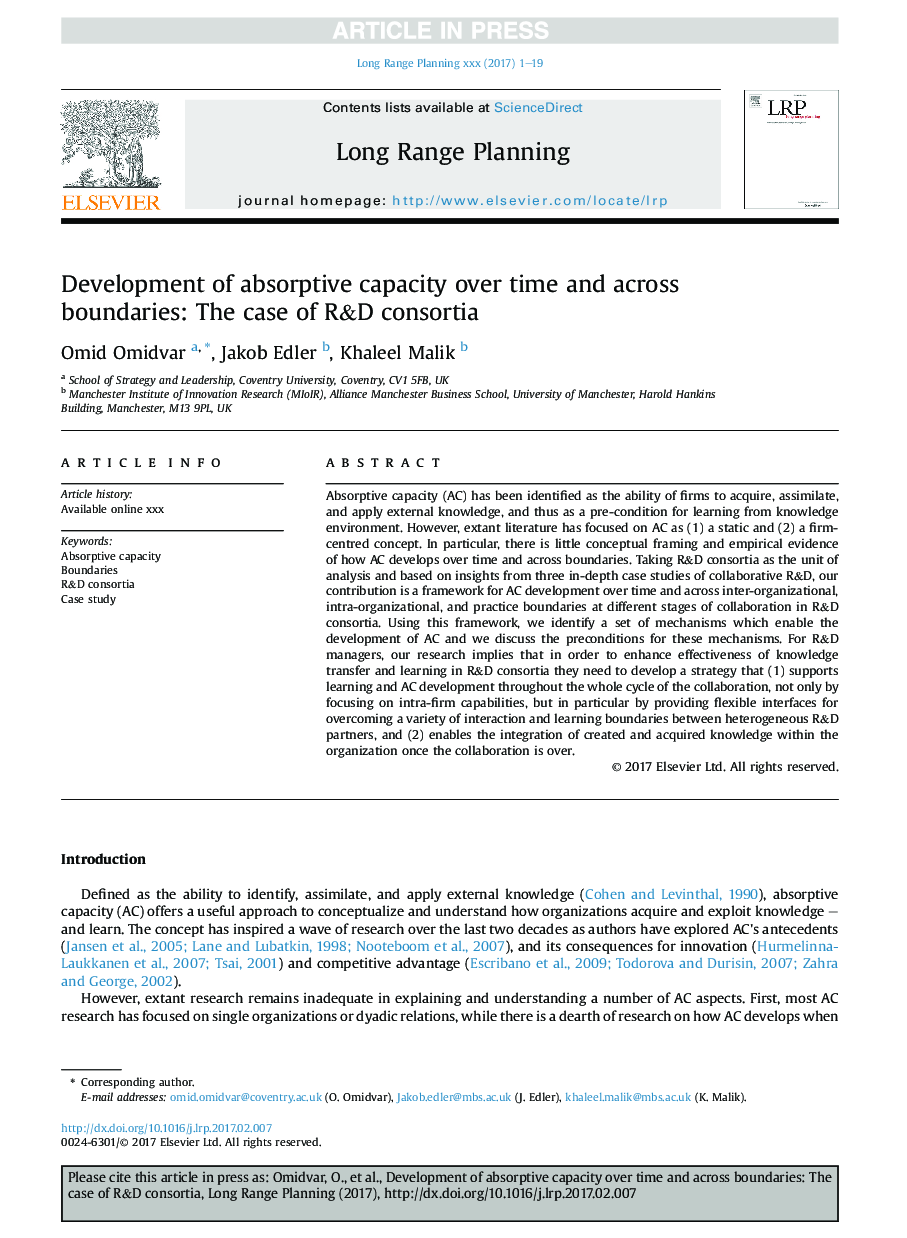| Article ID | Journal | Published Year | Pages | File Type |
|---|---|---|---|---|
| 5110236 | Long Range Planning | 2017 | 19 Pages |
Abstract
Absorptive capacity (AC) has been identified as the ability of firms to acquire, assimilate, and apply external knowledge, and thus as a pre-condition for learning from knowledge environment. However, extant literature has focused on AC as (1) a static and (2) a firm-centred concept. In particular, there is little conceptual framing and empirical evidence of how AC develops over time and across boundaries. Taking R&D consortia as the unit of analysis and based on insights from three in-depth case studies of collaborative R&D, our contribution is a framework for AC development over time and across inter-organizational, intra-organizational, and practice boundaries at different stages of collaboration in R&D consortia. Using this framework, we identify a set of mechanisms which enable the development of AC and we discuss the preconditions for these mechanisms. For R&D managers, our research implies that in order to enhance effectiveness of knowledge transfer and learning in R&D consortia they need to develop a strategy that (1) supports learning and AC development throughout the whole cycle of the collaboration, not only by focusing on intra-firm capabilities, but in particular by providing flexible interfaces for overcoming a variety of interaction and learning boundaries between heterogeneous R&D partners, and (2) enables the integration of created and acquired knowledge within the organization once the collaboration is over.
Related Topics
Social Sciences and Humanities
Business, Management and Accounting
Business and International Management
Authors
Omid Omidvar, Jakob Edler, Khaleel Malik,
